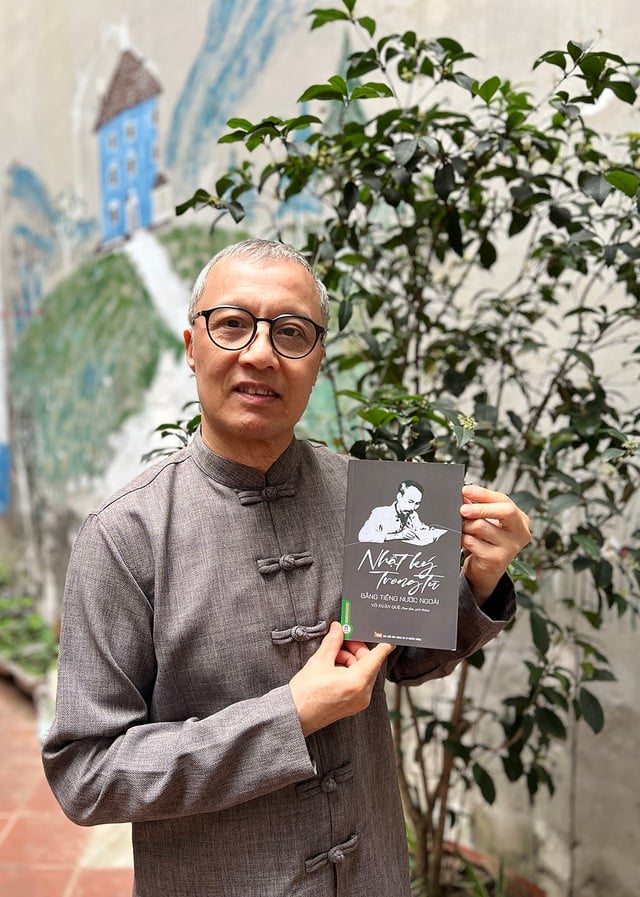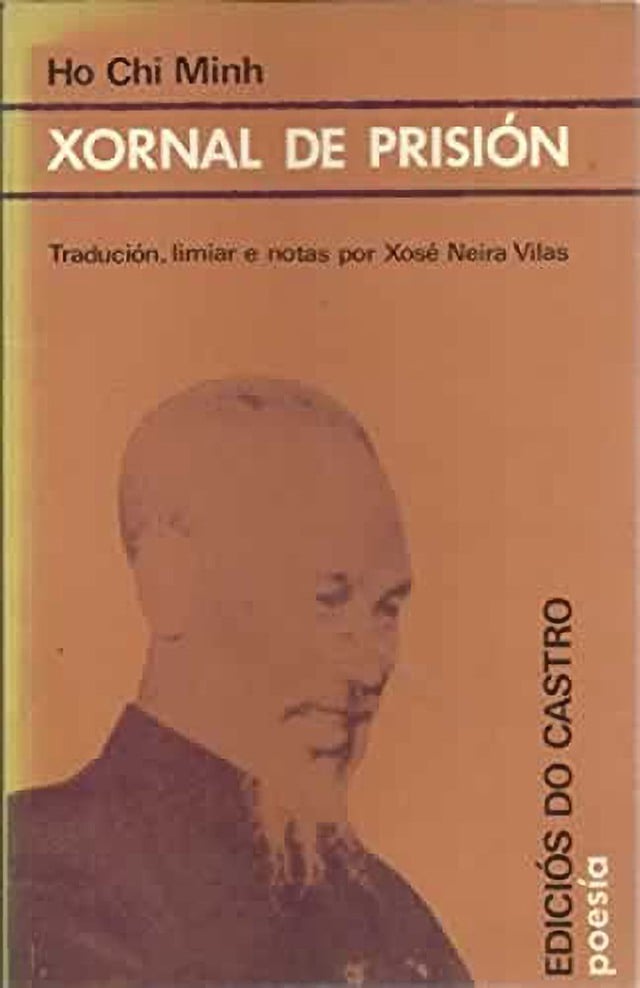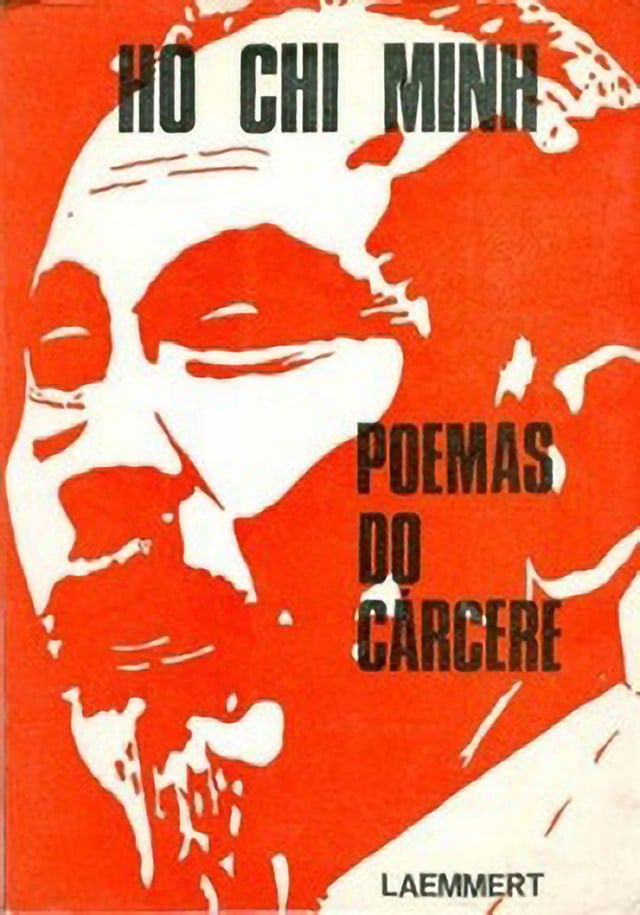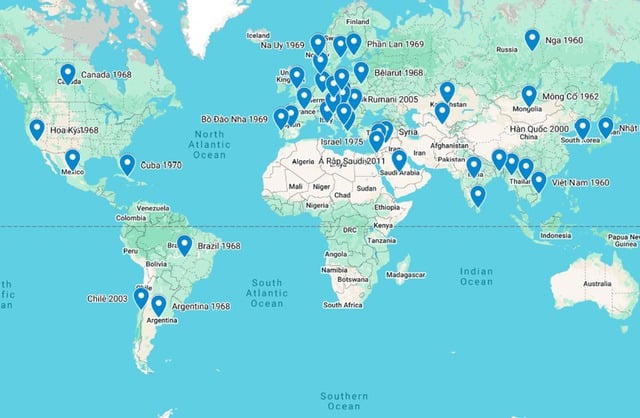Prison Diary in Foreign Languages is a very special work, as it has collected the most abundant number of translations ever: 37 languages with 62 translations by 79 translators, including 15 translations that have not been known and introduced in Vietnam.
Why did you collect foreign translations of Prison Diary?
Dr. Vo Xuan Que: In 2019, I received a letter from Ms. Dang Thi Hai Tam, a diplomat who became the Vietnamese Ambassador to Finland, saying that she wanted to do some cultural work, including collaborating with us to translate President Ho Chi Minh 's Prison Diary into Finnish. We discussed with her that the Prison Diary had been translated by a very famous Finnish poet 60 years ago.

Dr. Vo Xuan Que and his Prison Diary in a foreign language
PHOTO: NVCC
After that, when I searched for research materials and collected information about Prison Diary that had been translated into foreign languages in Vietnam, I was surprised to find that the Finnish translation of Prison Diary was not known in Vietnam. So I decided to try searching for other languages, and found that there were translations from 60 years ago, but in Vietnam, only the Swedish and Danish translations were recorded. I expanded my collection without thinking that the search would last for 5 years.
I contacted university libraries and national libraries of other countries, collected translations, and introduced them in Vietnamese newspapers. That time was also when the Covid-19 pandemic broke out. The responses I received from them helped me collect some translations and connect with some translators that my predecessors did not have or had not introduced to Vietnamese readers.
Actually, my job is not really about literature, but about language research, but I find that this area is still lacking at home. Once, taking my child to the Ho Chi Minh Museum, in the display area of President Ho Chi Minh's relics, I only saw a few copies of the Prison Diary photographed, no Nordic languages and sketchy notes. Doing so is not worthy of the stature of the Prison Diary . Abroad, I often visit museums because I see that people do it very well, witheducational value, and a lot of information. I thought of doing it this way to attract more people's interest in this work. I think this is a gift on the occasion of the 65th anniversary of the National Language Prison Diary of President Ho Chi Minh being introduced to the public.
With the scale that Prison Diary has been translated into, as you noted in the book: 37 languages, from 42 countries, with 62 foreign translations, a number that can be said to be a record in Vietnamese literature, how do you think foreigners (through translators) understand Prison Diary?

Prison Diary cover in Galician, 1978
PHOTO: NVCC
When I was in school, a friend of mine said that when we fly into space, we can see how beautiful the earth is. I also contemplated this, when I went abroad, I understood how beautiful my country is. Likewise, Prison Diary was translated into Vietnamese a long time ago, and has been researched, analyzed, and collected a lot. But we have not been able to look from the outside, specifically how many translations, in which languages… From collecting these translations, we will understand why the translators abroad chose to translate that work into their language. Then we will understand how readers abroad received the book.
I think my collection helps people in the country know that foreign readers understand President Ho Chi Minh in a different aspect: a poet, an artist, different from the image they still know of Ho Chi Minh as a revolutionary, the leader of Vietnam.
I not only contacted living authors but also sought out deceased authors. For example, we went to the cemetery in Finland during the Covid-19 pandemic, where the legendary translator and poet Pentti Saarikoski rests. During his lifetime, he was a candidate for the Communist Party to run for the Finnish Parliament. He wrote in the preface to his translation: "I translated Prison Diary because these are good poems, because I admire the career of President Ho Chi Minh and the brave and resilient struggle of the Vietnamese people under his leadership that won victory." He wrote these words on September 6, 1969, the day the Vietnamese people mourned President Ho Chi Minh.
Or as the husband and wife translators of the Polish version wrote in the preface: "With short poems, often only four lines, Ho Chi Minh painted realistic pictures of his suffering and that of his fellow prisoners in a humorous and profound way. His concise poems are small masterpieces."
Another translator, who translated Galician, was a writer who lived in Cuba and then returned to his homeland of Galicia, a small region in northwestern Spain. He translated the Prison Diary over a period of seven years. He wrote in the preface: "Despite the suffering, illness and horrors that surrounded him, Ho Chi Minh still found the strength to write optimistic and humorous poems. The short poems were skillfully woven in the darkness of his prison cell. The poet and the revolutionary became one in him."
And there are many other comments. Through the texts I read, they highly appreciated the artist in President Ho Chi Minh. People translated because they felt it was good and different from what they already knew about President Ho Chi Minh as a Communist leader, a revolutionary.
My intention in doing this is because this work shows another aspect of President Ho Chi Minh: a very artistic person. The spiritual heritage of President Ho Chi Minh has been recognized by the Vietnamese State as a national treasure, but in our museums we have not yet highlighted its full value. Because it is only natural that people would translate so much into their own language, there is no reason why we should not collect and introduce it to Vietnamese readers.

Prison Diary Portuguese edition, printed in Brazil in 1968

Author Vo Xuan Que at the grave of translator Penti Saarikoski in 2020

Map of countries that have printed Prison Diary
The process of researching the documents lasted 5 years, what are the things that make you remember?
It took a lot of effort, but I think this is a scientific work not only for me but also for my whole family. I had to contact colleagues and friends of my wife and children abroad to help me. For example, to collect the Italian translation, I had to ask my wife's acquaintances there. Or to find information about the Swedish version of Prison Diary in a used bookstore in Sweden, I had to ask my daughter's friend to go there to buy it for me.
Among the translations I have collected, there are two minority languages. One is the Basque people, only about a million people, in northwestern Spain; and the other is the Galician language, a minority language also in Spain. Both translations are from the Spanish version.
Before I collected it, in Vietnam, there was only one Spanish translation by a famous Cuban poet. But in fact, there were 3 different Spanish translations, and if you count the ones printed in Spain, there were also 2 minority languages as mentioned.
Among the translators of Prison Diary that I contacted, there was Satchidananda, a famous Indian poet and a Nobel Prize nominee. He translated Prison Diary into Malayalam, which many people may not have heard of. His translation was first published in 1976, and has been reprinted 7 times, most recently in 2021. Currently, it is possible to find online which libraries in India have these translations. In addition, Bengali, a major language in India and also the official language of Bangladesh, has 4 translations of Prison Diary , of which 3 are by Bangladeshis, one is by an Indian poet, a professor at Nehru University who is very proficient in Chinese, who translated directly from Chinese into Bengali poetry.
In addition to the poetic translations, I also know that there is 1 piece of music by a German composer and 2 choral pieces by 4 British composers based on Prison Diary . Up to now, I have not seen any Vietnamese composers compose music inspired by Prison Diary , so I was very surprised to find information that there are 3 pieces of music by foreign composers based on this work.
The book is the life's work of Dr. Vo Xuan Que. He has painstakingly collected documents from many countries, met and interviewed many translators and writers from many countries, or sometimes was lucky enough to connect with authors who translated President Ho Chi Minh's Prison Diary in countries around the world. Dr. Vo Xuan Que's meticulous care has produced the most elaborate and complete work on translating Prison Diary in many countries.
(Major General, writer Nguyen Hong Thai)
Source: https://thanhnien.vn/cuoc-tim-kiem-5-nam-cua-nha-ngon-ngu-viet-kieu-185250517174251277.htm


![[Photo] General Secretary To Lam visits exhibition of achievements in private economic development](https://vphoto.vietnam.vn/thumb/1200x675/vietnam/resource/IMAGE/2025/5/18/1809dc545f214a86911fe2d2d0fde2e8)

![[Photo] National conference to disseminate and implement Resolution No. 66-NQ/TW and Resolution No. 68-NQ/TW of the Politburo](https://vphoto.vietnam.vn/thumb/1200x675/vietnam/resource/IMAGE/2025/5/18/adf666b9303a4213998b395b05234b6a)
![[Photo] More than 17,000 candidates participate in the 2025 SPT Competency Assessment Test of Hanoi National University of Education](https://vphoto.vietnam.vn/thumb/1200x675/vietnam/resource/IMAGE/2025/5/17/e538d9a1636c407cbb211b314e6303fd)





















![[Photo] Prime Minister Pham Minh Chinh chairs meeting on science and technology development](https://vphoto.vietnam.vn/thumb/1200x675/vietnam/resource/IMAGE/2025/5/17/ae80dd74c384439789b12013c738a045)































































Comment (0)